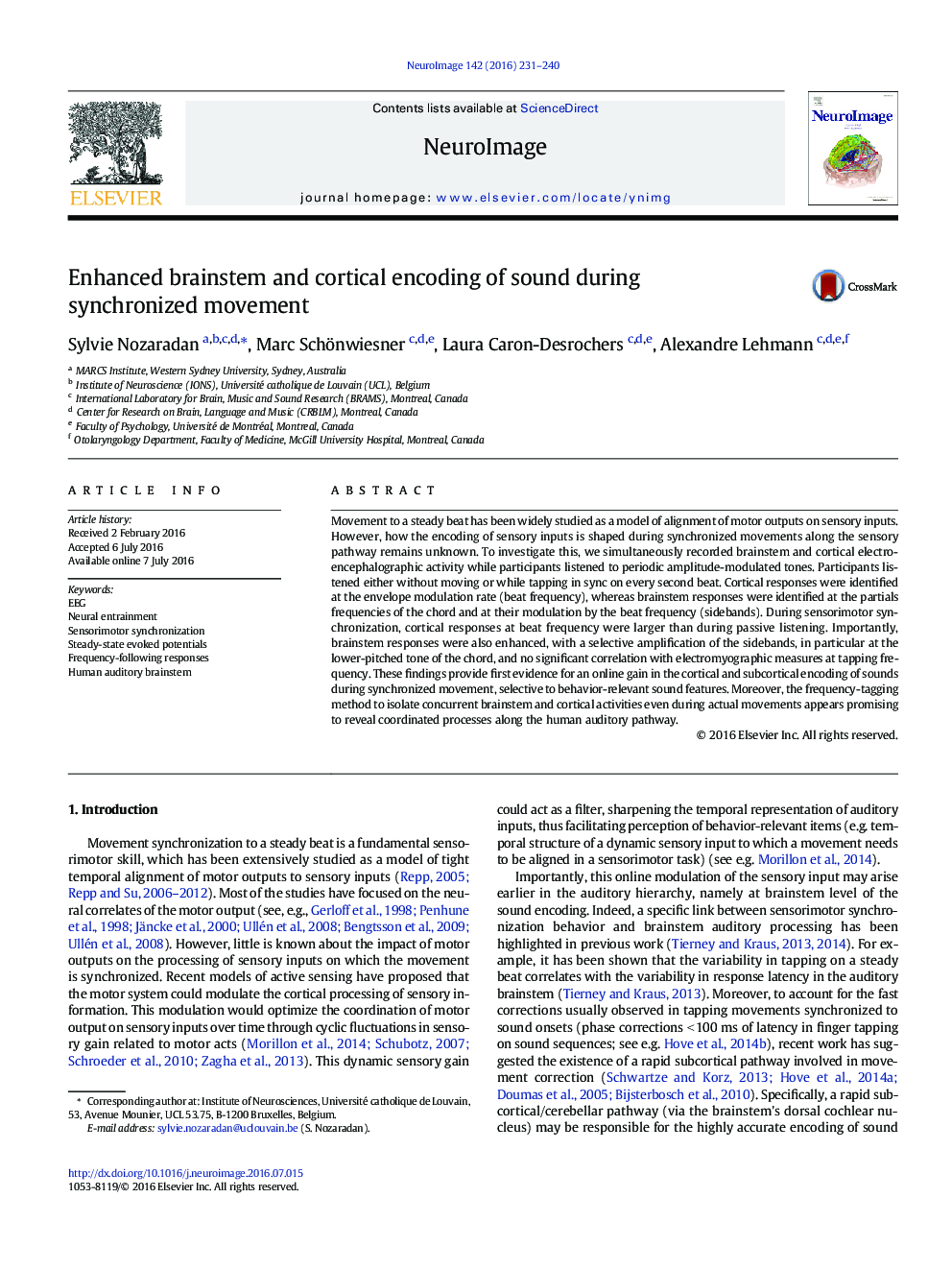| Article ID | Journal | Published Year | Pages | File Type |
|---|---|---|---|---|
| 5631433 | NeuroImage | 2016 | 10 Pages |
â¢Enhanced cortical and subcortical encoding of sound during synchronized movementâ¢Selective boost of behavior-relevant sound features in the brainstem when movingâ¢The brainstem encoding of bass tones is selectively boosted during sync movement.
Movement to a steady beat has been widely studied as a model of alignment of motor outputs on sensory inputs. However, how the encoding of sensory inputs is shaped during synchronized movements along the sensory pathway remains unknown. To investigate this, we simultaneously recorded brainstem and cortical electro-encephalographic activity while participants listened to periodic amplitude-modulated tones. Participants listened either without moving or while tapping in sync on every second beat. Cortical responses were identified at the envelope modulation rate (beat frequency), whereas brainstem responses were identified at the partials frequencies of the chord and at their modulation by the beat frequency (sidebands). During sensorimotor synchronization, cortical responses at beat frequency were larger than during passive listening. Importantly, brainstem responses were also enhanced, with a selective amplification of the sidebands, in particular at the lower-pitched tone of the chord, and no significant correlation with electromyographic measures at tapping frequency. These findings provide first evidence for an online gain in the cortical and subcortical encoding of sounds during synchronized movement, selective to behavior-relevant sound features. Moreover, the frequency-tagging method to isolate concurrent brainstem and cortical activities even during actual movements appears promising to reveal coordinated processes along the human auditory pathway.
